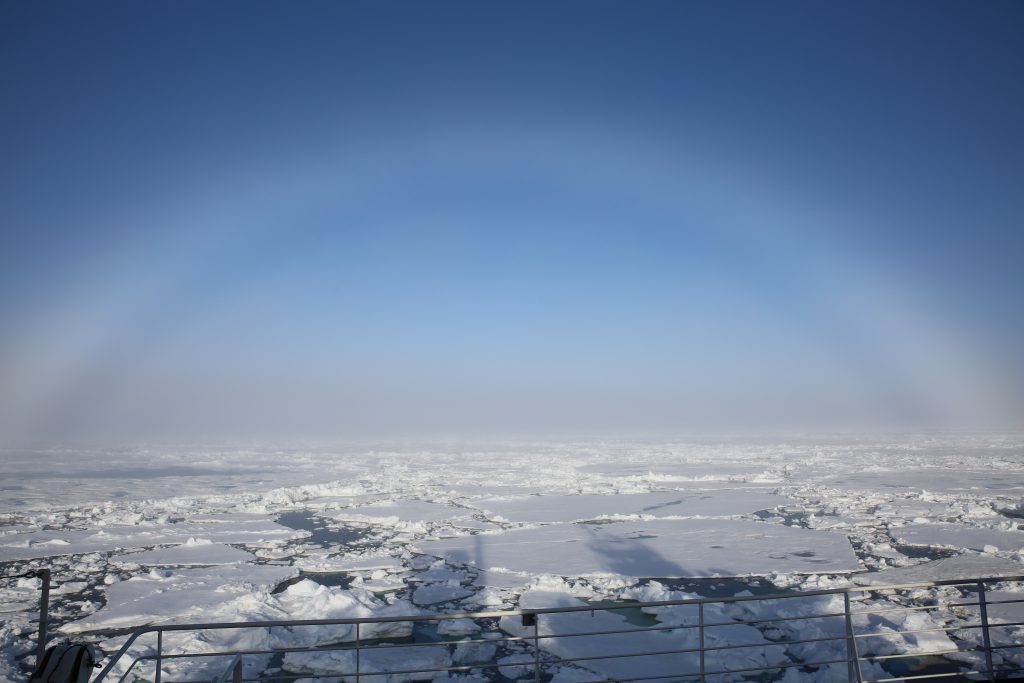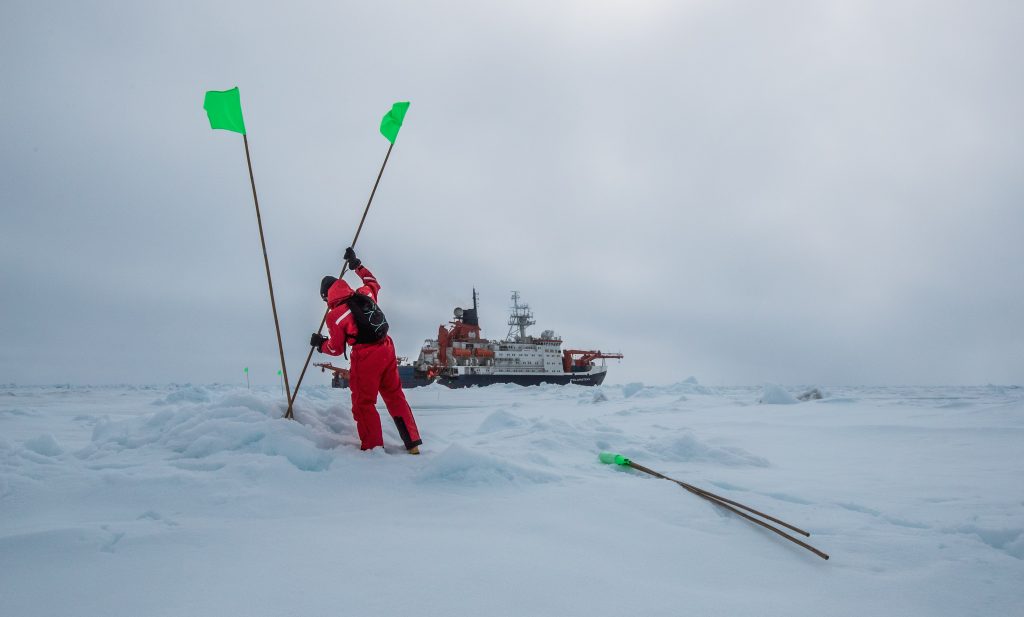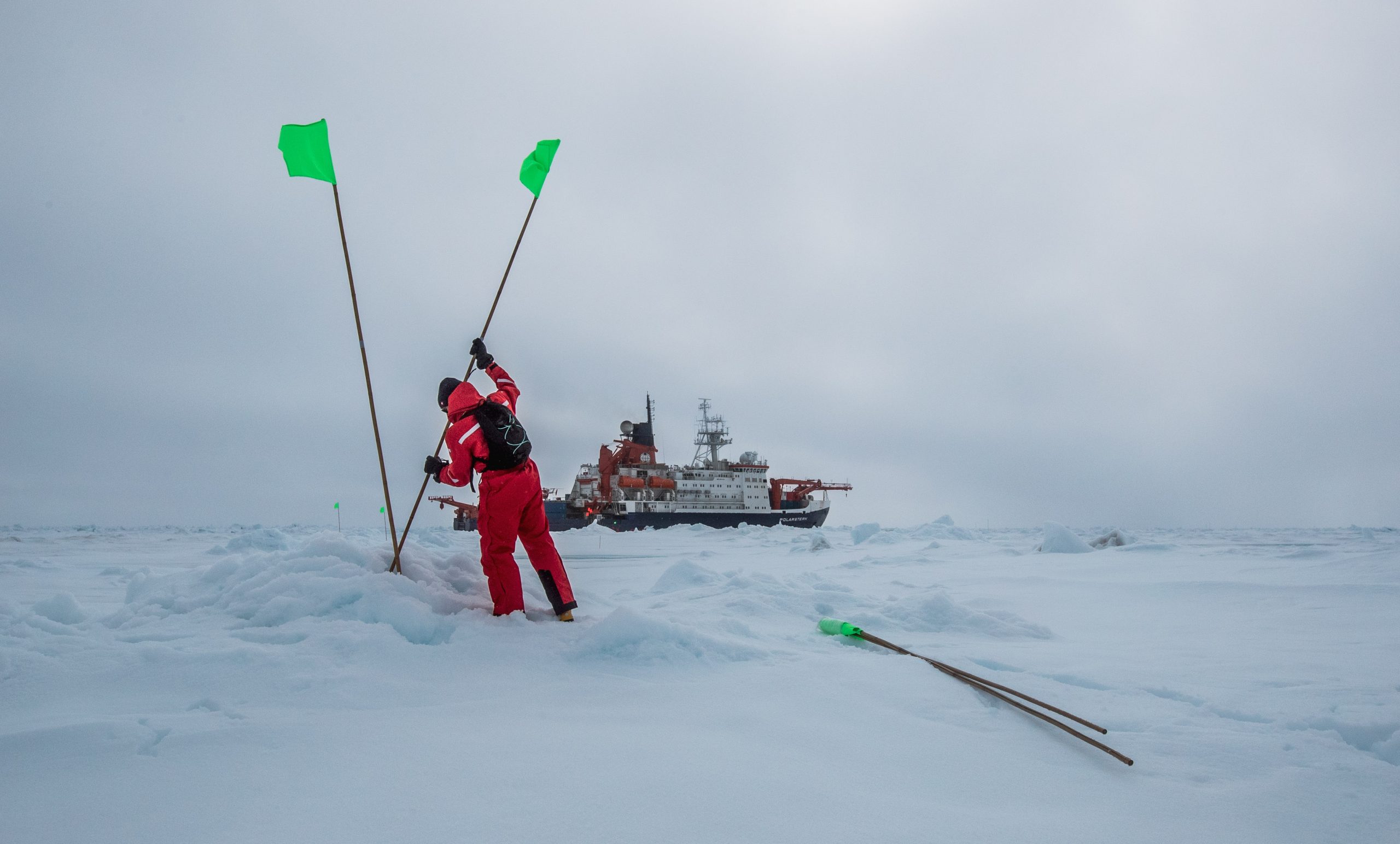by Matthew Shupe, CIRES/NOAA scientist and co-coordinator of MOSAiC
There are these beautiful days out over the Arctic ice. Vibrant blue sky with a piercing sun. Today was one of those days. Warm out, and the sun overpowering. Just like with a strong wind, I found myself turning away from the sun when possible. When facing the sun it feels like my skin is cooking. Illuminated from every direction. But those rays of sunlight also make everything else so vibrant. The blues of ice chunks are bluer. Deep ocean is blacker. The snow is whiter. Our fancy floatation suites stick out in bold red. Bold and strong colors in the Arctic sun.

Jackson, Tereza, and I were fortunate enough to enjoy this day out away from the ship. We first took a 2-min helicopter ride over to the old MOSAiC Central Observatory to prepare our flux sled that has been operating there, diligently as Polarstern was gone. We then were flown over to the L2 site in our distributed network about 6 miles away. After a brief wait and a chance to explore the area, the helicopter returned. Hung about 30 meters below was our sled, spinning and swinging gently. I stood there, arms outstretched in a big red X. X marks the spot. The heli pilot Harold then slowly lowered the package to the surface. Amazingly gently, although I still was very cautious as the whole thing could swing sideways at any moment. Downwash from the rotor all around. Looking up I could see the heli technician Dave looking out the side door, down at me. He is the eyes for Harold for this type of operation. The sled is now solidly on the surface, slings detached from the hook….. And like that the helicopter is off, leaving us out in silence at L2.
Glorious silence. The Polarstern always has some engine on, to generate power and maintain position, so there is the constant hum of 50 Hz all around the ship and the MOSAiC floe. But out at L2 the only sounds are an occasional chink of ice, or maybe a bird squawk. Mostly silent, and bathed in sun.
Our work at L2 went well. Re-installing many instruments, carving out a flat space on the floe, hopefully at a location that will not become engulfed in a melt pond. The area has survived pretty well. It is perhaps 40-50 meters from the edge of this floe, and open water. We have an ocean flux buoy and an ocean profiling buoy, both perched in little self-made melt puddles. And ice mass balance buoy still standing, though leaning somewhat from its perch in a small melt pond. A snow buoy, standing yet leaning.

We were sent with instructions to retrieve data from a radiation station but found that station in a precarious situation. The blocks of ice supporting it were now up on their side, right at the edge of the floe. Some of the equipment was still there but now mostly bent and mangled. But the business end, the little radiometers, were sitting about 10 cm above the surface. Somehow still intact with little damage. Unfortunately, the data logging box was nowhere to be found. So we’ve recovered the instrument itself, but lost the data…. On balance that is a big loss.
After a long day of cooking in the Arctic sun, our flux station has now been returned to L2, where it can now continue operations with its buoy buddies. It’s too bad that we didn’t have continuity at this site for the last couple of months, but this flux station did play an important role during its time away, helping to maintain continuity at the main floe while the met tower was down and the Polarstern was gone.

